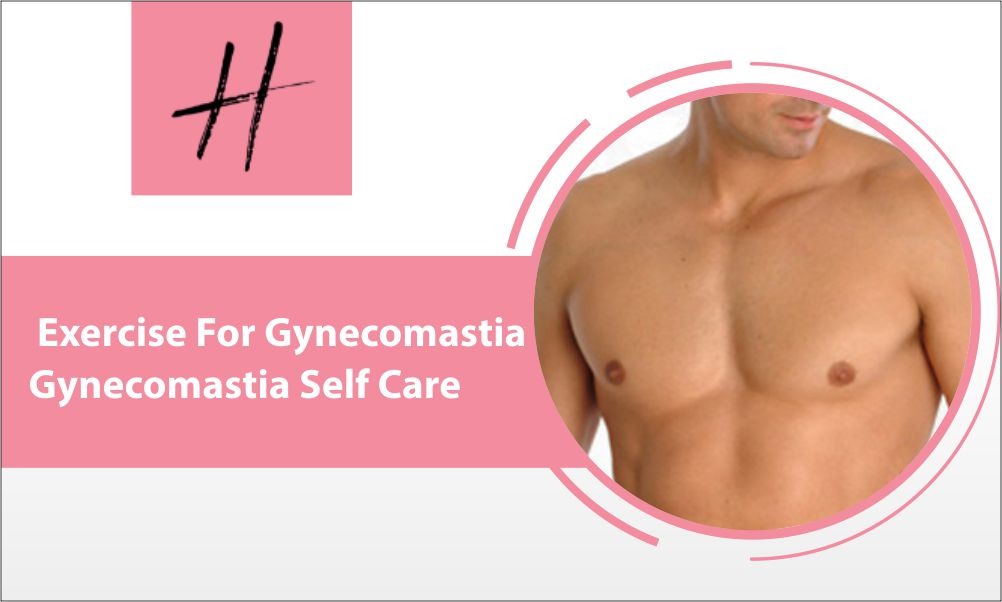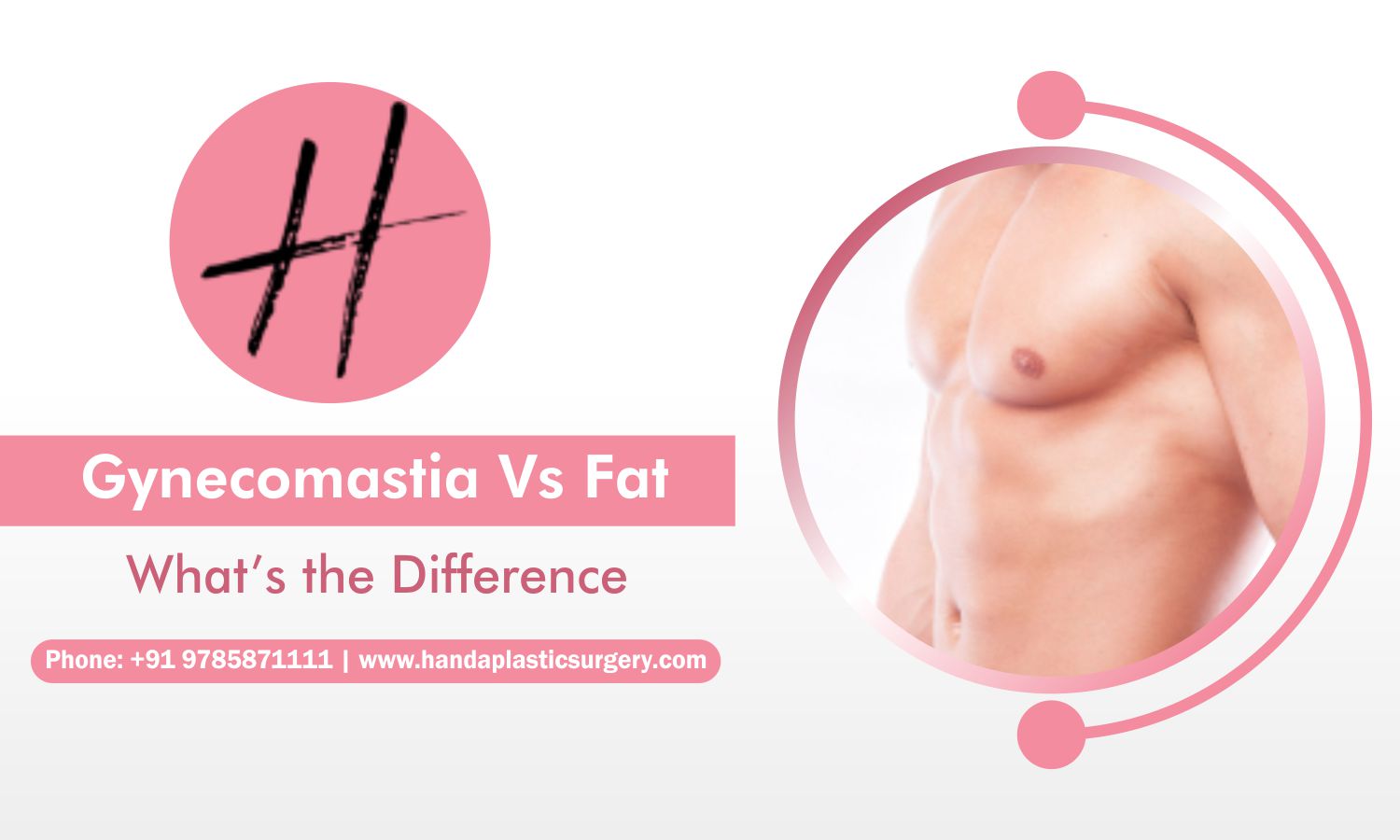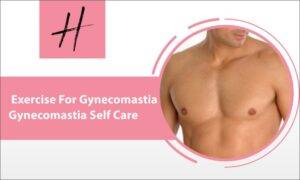Gynecomastia, often referred to as male breasts or “moobs,” occurs when individuals with male anatomy develop breast tissue. While true gynecomastia, characterized by actual breast tissue growth, is uncommon due to the hormonal balance in most men, excess fat on the chest can create a similar appearance.
To address both true and false gynecomastia, there are various exercises that can help. Incorporating chest-focused workouts like push-ups, chest presses, and dumbbell pullovers into your routine can help tone the pectoral muscles and reduce the appearance of breast-like tissue. Additionally, cardiovascular exercises such as running, cycling, or swimming can aid in overall fat loss, including fat in the chest area. By combining these exercises with a balanced diet, individuals can work towards reducing the appearance of gynecomastia and achieving a more defined chest. For personalized advice and further information on managing gynecomastia, consider consulting Handa Aesthetics.
Also Read: GYNECOMASTIA PINCH TEST IN INDIA – Handa Aesthetics
Exercises For Gynecomastia
The following exercises for gynecomastia can be used to summarize the various ways to treat gynecomastia with exercise and its impact:
# Some of the exercise for gynecomastia are planks, bench presses, pushups, reverse cable pulls, standing cable fly, etc /
Push Ups
The steps to do push-ups are as follows:
- Start in a high plank stance with your feet together and your hands slightly wider than shoulder width apart.
- Maintain a straight line from your head to your heels by activating your core muscles.
- Bend your elbows while keeping them close to your sides to lower your body.
- As low as you can go without feeling uncomfortable, stoop until your chest is barely off the ground.
- Raise your body back to the starting position by pushing through your hands and extending your arms.
- Avoid drooping your hips or lifting your buttocks during the exercise by maintaining a straight body.
- Repeat as many times as necessary while keeping good form and control.
Standing Cable Fly
Here are the steps to perform Standing Cable Fly:
- The cords on a cable machine should be at shoulder height when you stand in the middle of it.
- With your palms facing ahead and your elbows slightly bent, hold the wires’ handles.
- Move forward to exert pressure on the cables.
- Keep your knees slightly bent and contract your abs for support.
- Cross your arms in front of your chest as you pull your arms forward and inward under control.
- After a little pause, carefully bring your arms back to the beginning position while maintaining a tiny bend in them.
- Repeat as many times as necessary, paying close attention to your form and your controlled motions at all times.
Plank to Push-Up
The steps to do a plank to push-up are:
- With your body in a straight line and your hands directly beneath your shoulders, begin in the high plank position.
- One arm at a time, lower yourself onto your forearms while keeping your body straight and engaging your core.
- One hand at a time, raise yourself back up onto your hands while fully extending your arms.
- Maintaining appropriate form and control as you alternate between forearm plank and high plank is important.
- Avoid allowing your hips sink or lift throughout the exercise by maintaining core stability.
- Repeat as many times as necessary while keeping your breathing even and your motions under control.
Reverse Cable Pulls
The procedures for reverse cable pulls are as follows:
- Place the cords on the machine’s lowest setting as you stand facing it.
- With your palms facing down, take the handles with an overhand grip.
- Step backwards to tighten the wires while keeping your knees slightly bent.
- Pull the handles back and up while keeping your arms straight and pushing your shoulder blades together.
- At the conclusion of the movement, take a little pause before releasing slowly and going back to the beginning position.
- Throughout the entire workout, keep your motion regulated and steady.
- Repeat as many times as necessary while paying close attention to your form and using your back muscles.
Bench Press
Here are the steps to perform the Bench Press:
- Your feet should be firmly planted on the ground as you lay down on a level bench.
- Take an overhand grip on the barbell with your hands slightly wider than shoulder-width apart.
- With your arms fully extended, raise the barbell off the rack and hold it immediately above your chest.
- Keeping your elbows at a 90-degree angle, lower the barbell towards your chest slowly and steadily.
- When the barbell is directly above your chest, pause momentarily.
- Your arms should be completely extended to push the barbell back up.
- Focus on keeping good form and control throughout the action as you repeat for the necessary amount of time.
Dumbbell Pullover
The steps to perform dumbbell pullover are as follows:
- Lie flat on a level bench with your knees bent at an angle of 90 degrees.
- Hold a low or medium weight dumbbell over the chest with the elbows slightly bent.
- Bring the dumbbell back over the head all the way down.
- Practice this exercise in three sets at first.
- Aim to add more sets with 10–12 reps each gradually.
Combining exercise with a balanced diet is ideal for best results. A diet that is well-balanced and abundant in fruits, vegetables, lean meats, and whole grains can help people lose weight and improve their body composition. A balanced diet and a well-hydrated body will stop the accumulation of extra fat and considerably improve exercise results. Exercise and a sufficient protein intake balance the body’s weight distribution for the best possible muscular performance. Therefore, a diet high in protein-rich sources is ideal for those who have gynecomastia.
Note- Exercise only reduces the fat thus for the proper treatment of the gynecomastia consult the certified professionals.
Also Read: Gynecomastia vs Chest fat: What is the difference
Dietary Supplements To Reduce Gynecomastia
Despite the fact that there isn’t one specific food that may cure gynecomastia, eating healthily helps assist overall weight control and hormone balance, which may afterward aid lessen the disease. Here are some dietary recommendations that may help you live a healthier lifestyle and maybe lessen gynecomastia:
- Increase your protein consumption: by including lean protein sources in your diet, such as chicken, fish, tofu, and lentils. Leaner body composition can be achieved by promoting muscle growth and repair with protein.
- Eat a balanced diet: Consume various fruits, vegetables, whole grains, and healthy fats. A balanced diet ensures you get the nutrients you need and promotes general health.
- Limit your intake of processed foods: because they frequently contain unhealthy fats, sugars, and additives. Limiting their consumption can help with hormone balance and weight management.
- Foods with antioxidants and anti-inflammatory characteristics: berries, leafy greens, fatty fish, and nuts, should be consumed. These meals can aid in lowering inflammatory levels in the body.
- Stay hydrated: To improve general health and maintain hydration levels, drink enough water each day.
- Limit alcohol consumption: it can throw off your hormones and make you gain weight. It is recommended to drink alcohol in moderation or not at all.
Remember that, even while dietary modifications may improve general health and help reduce gynecomastia, it is crucial to speak with a healthcare provider for a precise diagnosis and individualized treatment plans or necessary measures.
Foods To Avoid In Gynecomastia
Gynecomastia is not directly caused or treated by any particular foods, although some dietary decisions may lead to hormone imbalances or weight gain, which can worsen the illness. As was already indicated, males with higher-than-normal estrogen levels are the ones who develop gynecomastia. Consequently, foods that have an anti-estrogen impact will aid in decreasing the role of estrogen. If you have gynecomastia, limit or avoid the following foods:
- Foods high in estrogen: Flaxseeds, sesame seeds, and some legumes contain naturally occurring estrogen-like substances. Individuals with gynecomastia may restrict their consumption, notwithstanding the negligible effect.
- Soy-based products: Soy contains chemicals that, when ingested, might mimic the effects of estrogen. Consuming soy-based goods like tofu and soy milk in moderation is better.
- Processed and packaged foods: These frequently have chemicals, preservatives, and bad fats that may have an adverse effect on hormone balance and weight control.
- Caffeine: While modest amounts are usually harmless, excessive amounts, such as those found in energy drinks or copious amounts of coffee, might interfere with hormone balance and aggravate gynecomastia.
- Alcohol: Drinking too much alcohol can mess with your hormones, make you overweight, and worsen your gynecomastia.
- High-fat foods: Limit your intake of fried foods, fatty meat cuts, processed snacks, and full-fat dairy items because they might cause hormonal abnormalities and weight gain.
- Sugary foods and beverages: Reduce consumption of sweetened meals and drinks such as sodas, juices, sweets, and desserts. Consuming too much sugar might result in weight gain and inflammation.
Always keep in mind that eating a balanced, diverse diet is essential for good health. To receive the correct assessment and advice, it is advisable to speak with a healthcare professional if you are concerned about gynecomastia.
When To See A Doctor For Gynecomastia?
You should be able to recognize any complications that may occasionally be linked to gynecomastia. It is advised to visit a doctor if you have any gynecomastia symptoms or indicators. Following are some scenarios where getting medical help is advised:
- Breast swelling or discomfort that does not go away: If you have noticed chronic breast swelling, enlargement, or tenderness in either or both breasts, it is crucial to see a doctor for a thorough evaluation.
- Uneven or asymmetrical breast growth: It is advised to consult a doctor to rule out any underlying causes if there is a sizable disparity in the size or form of the breasts.
- Pain or discomfort: It’s critical to get medical attention if you have pain, discomfort, or sensitivity in the breast region so that the root of the problem may be identified.
- Distress on the emotional or psychological level: Gynecomastia can negatively affect self-esteem and body image. Seeking medical assistance might offer direction and support if you are going through emotional or psychological suffering due to breast growth.
- Other associated symptoms: It’s critical to visit a doctor for a complete examination and the proper diagnostic tests if you experience any other symptoms like nipple discharge, skin abnormalities, or breast lumps.
Keep in mind that the best medical expert to correctly diagnose gynecomastia and ascertain its underlying cause is a board-certified plastic surgeon. The initial step in the therapy process is a non-surgical intervention in which patients are counseled to follow a balanced diet and exercise regularly.
Gynecomastia can be fully cured if the reason is a hormonal imbalance after this imbalance is stabilized. When surgery is necessary, plastic surgeons can remove both the extra glandular tissue and the extra fat deposits.
They can also address any worries or inquiries and offer suitable treatment alternatives. Gynecomastia surgery offers a long-lasting answer to the issue.
Takeaway
Exercise can help reduce body fat and improve general chest muscle tone, although it often does not immediately address gynecomastia. Gynecomastia, characterized by excess breast tissue or hormonal imbalances, frequently necessitates medicinal or surgical therapy to reduce breast size effectively.
One of the top plastic surgeons for gynecomastia surgery is Dr. Arjun Handa. He has treated many patients successfully and with excellent results using his significant experience and ability to perform gynecomastia operations. Gynecomastia surgical procedures are always evolving, and Dr. Arjun Handa stays up to date on these developments to give his patients the most cutting-edge and efficient care possible.
In order to get the best outcomes, Dr. Arjun Handa also adopts a personalized approach with each patient, thoroughly assessing their ailment and creating a treatment plan just for them. He is regarded as a reliable option for anyone considering gynecomastia surgery due to his professionalism, compassion, and attention to patient care.




